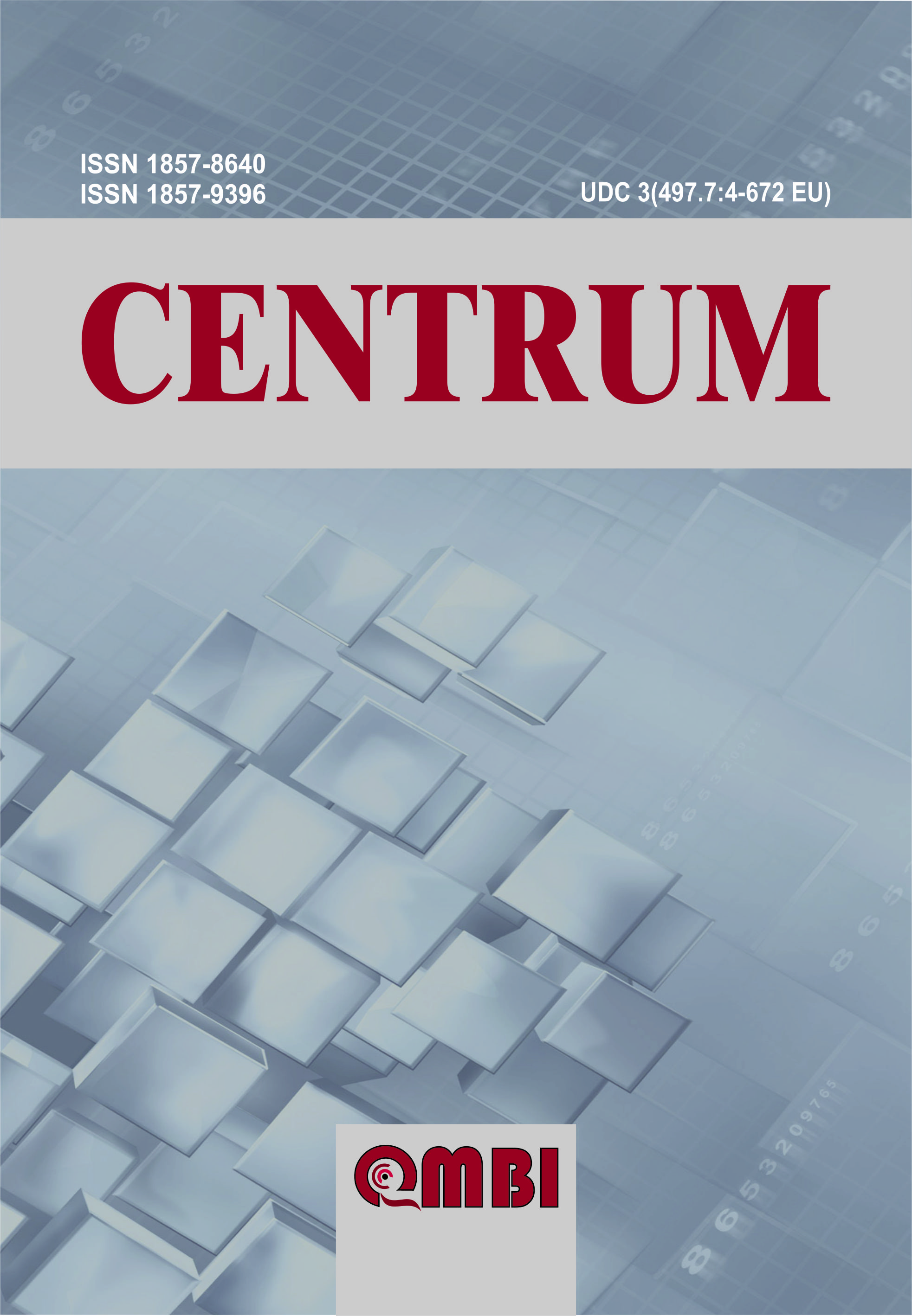
INTERNATIONAL SCIENTIFIC JOURNAL
Center for Understanding and Institutional Cooperation
ISSN: 1857-8640
DOI: 10.5897/UJ-CENTRUM
Email: centrum.qmbi@gmail.com
COMPOSITE OF ALBANIAN AND ENGLISH LANGUAGE
DOI: 10.5987/UJ-CENTRUM.17.021.1 | Article Number: FB0241AB21 | Vol.6 (1) - June 2016
Author: "> Millaku Shkelqim
Keywords: Compound, noun, verb, adverb, adjective
The aim of this study is to see the definition of compound words between Albanian and English language. In Albanian it is possible to find these cite: “Kompozitë,-a f. (it. composito) gjuh. fjalë e përbërë, e formuar nga bashkimi i dy a më shumë temave ose fjalëve në një njësi të vetme fonetike, leksikore e gramatikore”2. A. Xhuvanit has publica-tion his opinion: “Mbi këtë çështje ka shkruar se pari N. Jokli në broshurën Naim Frashëri të botuar në Gratz më 1925. Se dyti pas tij, ka shkruar i ndjeri K. Cipo te Buletini i Institutit të Shkencave të vitit II nr. 2-3”3. When two (or more) elements which could potentially be used as stems are combined to form another stem, the form is said to be a compound. A compound lexeme (or simply a compound) can thus be defined as a lexeme containing two or more potential stems. Since each potential stem contains at least one root, a compound must contain at least two roots (wastepaper basket)... Compound nouns, verbs, adverbs (...) can be further subdivided into four groups according to semantic criterion. Consider first the example armchair, highbrow, maidservant; (…) the second type of compound is termed an endocentric (…). The thirdly, maidservant is a hyponym of both maid and servant: a maidser-vant is type of maid and also a type of servant. This type of compound is termed an appositional compound. The final division of compound nouns is exemplified by Alsace-Lorraine and Rank-Hovis (…), this type of compound is normally given the Sanskrit name of dvandva, although the English term copulative compound is also used to describe them.
1. Bauer, Laurie. English Word-Formation, London, 1983.
2. Celce-Murcia, Mariana. The Grammar book, USA, 1999.
3. Celce-Muricia, Marianne. The Grammar book, USA, Heinlein, 1999.
4. Chomsky, Noam. Syntactic Structure, New York, 2002.
5. Christopher Pountain, M.F.Lang, Spanish Word Formation, London, 1990.
6. Doyle, Arthur Conan. The lost world and other thrilling tales, London, 2001.
7. Eddings, David. Magician’s Gambit, London, 1983.
8. Fjalor i Gjuhës se Sotme Shqipe, Tiranë, 1980.
9. Fjalor i Termave të Gjuhësisë, Tiranë, 1975ë botuar nga Akademia e Shkencës e RPSH-Instituti i Gjuhësisë dhe i letërsisë, sektori i terminologjisë.
10. Fjalori i shqipes së sotme, Tiranë, 2002.
11. Germizaj, Shukrane. A comprehensive handbook of English Grammar, Prishtine, 2004.
12. Gramatika e Gjuhës shqipe I, Tiranë, 2002.
13. Grup autorësh, Fjalor i fjalëve të huaja, Prishtinë, 1988, f.315.
14. Henderickson, Robert. Word and phrase origins, New York, 1997.
15. Jokli, Norbert. Naim be Frashëri e pasunimi i gjuhës shqipe, Gjurmime albanologjike, seria shkencore filologjike II, 1972, Prishtinë, 1974.
16. Kabashi, Jashar. English Grammar Morphology, Prishtine, 2000.
17. Kadare, Ismail. Përbindëshi, Tiranë, 2005.
18. Kostallari, A. Mbi disa veçori të fjalës së përbërë në gjuhë shqipeë Studime mbi leksikun dhe mbi formimin e fjalëve në gjuhën shqipe I, Tiranë 1972.
19. Liz and John Soars, New Headway Advanced, Student’s book, Oxford, 2003.
20. Master, Peter. English grammar and technical writing, Washington, 2004.
21. Millaku, Sh. (2009). Kontributi i Zellik Harris për gjuhësinë, IASH. Tetovë.
22. Millaku, Sh. (2015). Kërkime gjuhësore. Prizren.
23. Millaku, Sh. (2011). Studime gjuhësore I. Prishtinë.
24. Millaku, Sh. (2011). Strukturat sintaksore. Prishtinë.
25. Millaku, Sh. (2009). (Profesor Selman Riza dhe Albanolo-gjia) Studimet e Selman Rizes në fushën e morfologjisë. Korçë, f. 143-150.
26. Millaku, Sh. (2011). Historiku i nyjës se prapme (kontrast me gjuhët ballkanike), Edukologjia, nr.2, f.81-96. Prishtinë.
27. Newmark, Leonard; Philip Hubbard, Peter Prifti, Standard Albanian, California, 1982.
28. Qesku, Pavli. Fjalor Anglisht-Shqip, English-Albanian Dictionery, Tiranë, 2002.
29. Quirk, Randolph; Sidney Greenbaum, University Grammar of English, London, 1973.
30. Shakespeare, William. Measure for Measure, London, 1995.
31. Shakespeare, William. Measure for Measure, London, 199t.
32. Shakespeare, William. Richard III, Denmark, 1993.
33. Shakespeare, William. The Winter’s Tale, Denmark, 1995.
34. Thomaj,Jani. Leksikologjia e gjuhës shqipe, Tiranë,1974.
35. Veljko Gortan, Oton Gorski, Pavao Paush, Gramatika latine, Prishtinë, 1985.
36. Xhuvani, Aleksande. “Kompozitat’’, Studime mbi leksi-kun dhe mbi formimin e fjalëve në gjuhën shqipe I, Tiranë 1972.
37. Yule, George. Oxford practice grammar, Oxford, 2008.
38. Millaku, Shkelqim, The contrast of Direct Object between Albanian and English language, ISSN: 2454-1362, http://www.online-journal.in - http://www.onlinejournal.in/IJIRV2I7 /253.pdf
Imperial Journal of Interdisciplinary Research, Dubai, 2016.
39. Millaku, Shkelqim,, The contrast of the gender between Albanian and English language, International Journal of Thales Educational Sciences (THEDS) ISSN (print): 2149-5130 - http://media.wix.com/ugd/d4d001_2582d04ef0264786b60ca6e76227ebc3.pdf 1-15; Vol.2, No.1, Turqi, 2016
40. Millaku, Shkelqim, 2015, The Compound Nouns, https://www.academia.edu/6091482/The_Compound_Nouns
41. Millaku, Shkelqim,, 2016, The Noun Phrases, Anglisticum Journal,
http://www.anglisticum.mk/index.php/Anglisticum/article/viewFile/580/647
42. Millaku, Shkelqim,, 2015, The Direct Object, Anglisticum Journal, file:///C:/Users/latitude/Downloads/233-668-1-PB%20(1).pdf
43. Millaku, Shkelqim,, 2015, The Genitive, Anglisticum Journal, file:///C:/Users/latitude/Downloads/156-422-1-PB%20(3).pdf
